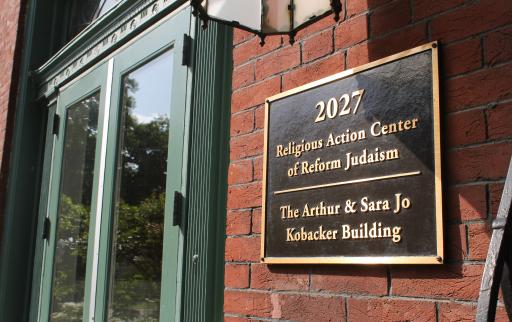
Building History
The earliest reference to our building is found in 1858. In 1869, its owners, Bowie and Snowdon, sold the lot to B.D. Carpenter as part of a subdivision named “Brothers Joint Interest” or “Nonesuch.” At this time, there were prohibitions attached to the property, including no manufacturing, no mechanical purposes, and no sale of liquors. Over the following twenty years, there were at least three other owners of the land. By 1892, a brick structure stood on the land.
In 1887, the owner was James G. Blaine, a politician from Maine who in his career served as a U.S. Representative from Maine, Speaker of the House, a U.S. Senator, Secretary of State (under two separate Presidents), and Republican nominee for President in 1884 (losing the election when he lost New York by just over a thousand votes). Interestingly, Blaine’s name lives on in the “Blaine Amendments,” provisions in many state constitutions that prohibit the use of state funds to support "sectarian" schools.
The building’s history becomes muddled in the early 1900s when a fire destroyed many local records. One reference mentions that the 1892 building still stood in 1903, and in 1911 the current 10,000-square-foot building was built as a one-family house. The current building was sold at least four more times between 1929 and 1956. In the early 1950s, it became an art school, and later, an embassy. In 1961 Robert and Charlotte Patterson sold the building to “a religious Ohio corporation,” or more specifically to the Union of American Hebrew Congregations (now the Union for Reform Judaism), and a year later the building was dedicated as the Religious Action Center of Reform Judaism.
New Features
In 2003, the RAC underwent a "top-to-bottom" renovation of the historic building with four important goals in mind:
- Making our facilities accessible to all -- illustrating inclusion as a core value of Reform Judaism;
- Building better facilities for seminars and other meetings;
- Integrating new technologies to enhance the RAC’s ability to serve and support congregations and coalitional allies; and
- Making the renovated building as “green” as possible, reducing our energy consumption and taking other steps to create an environmentally friendly building
The Kivie and Emily Kaplan Conference Center
The RAC's basement was converted into a 90-seat conference center, strengthening the RAC’s historic role as a meeting place for many in the public interest community.
